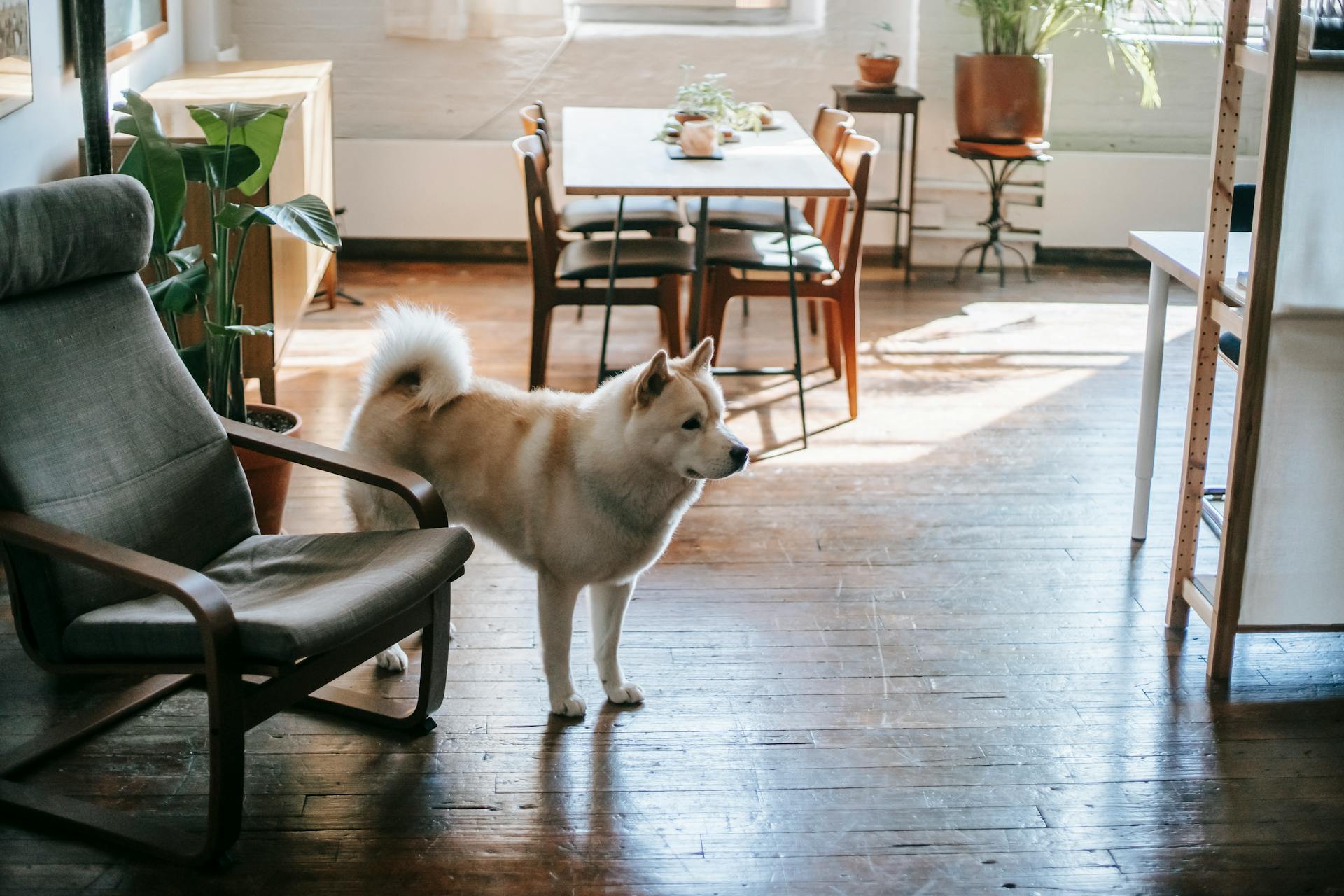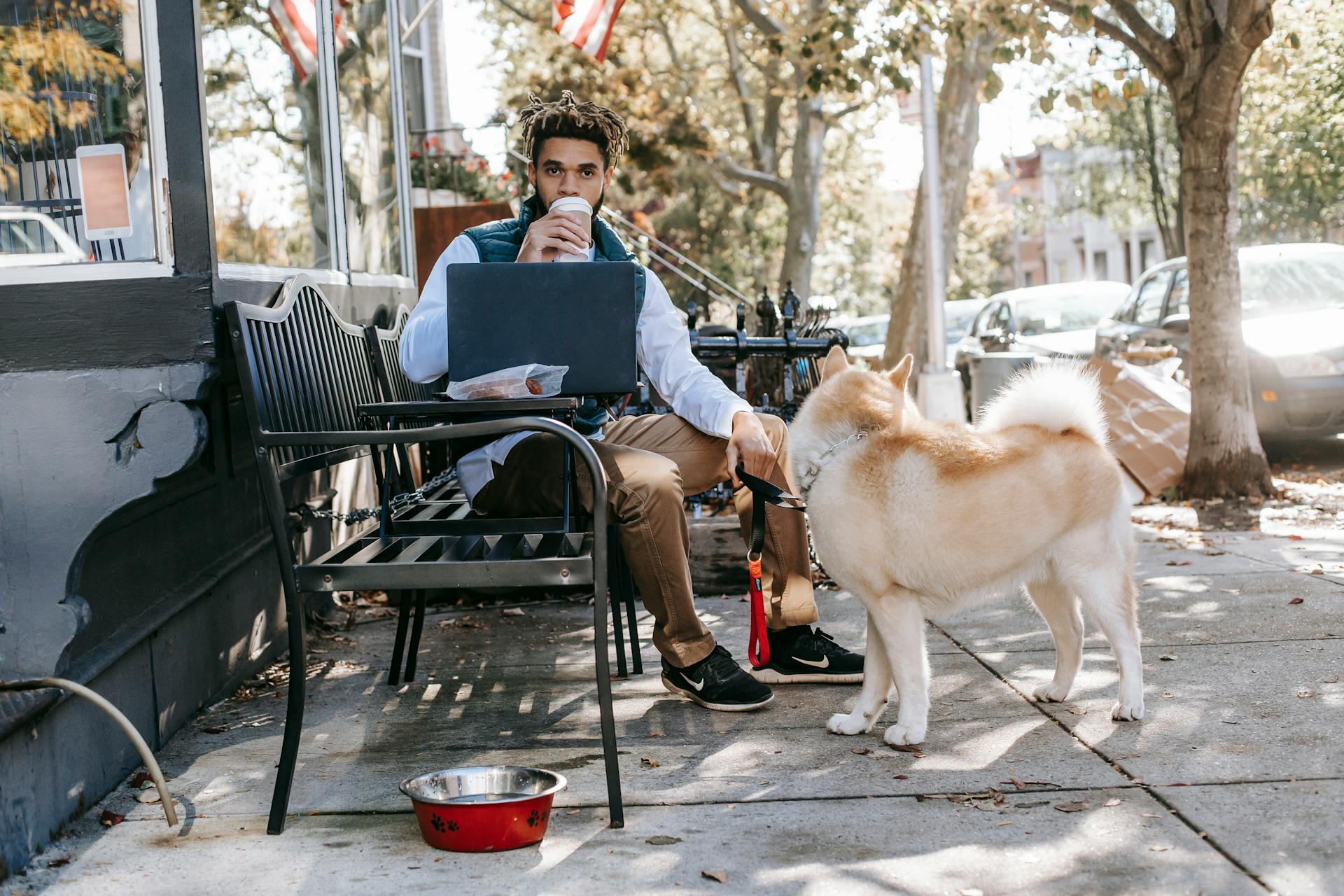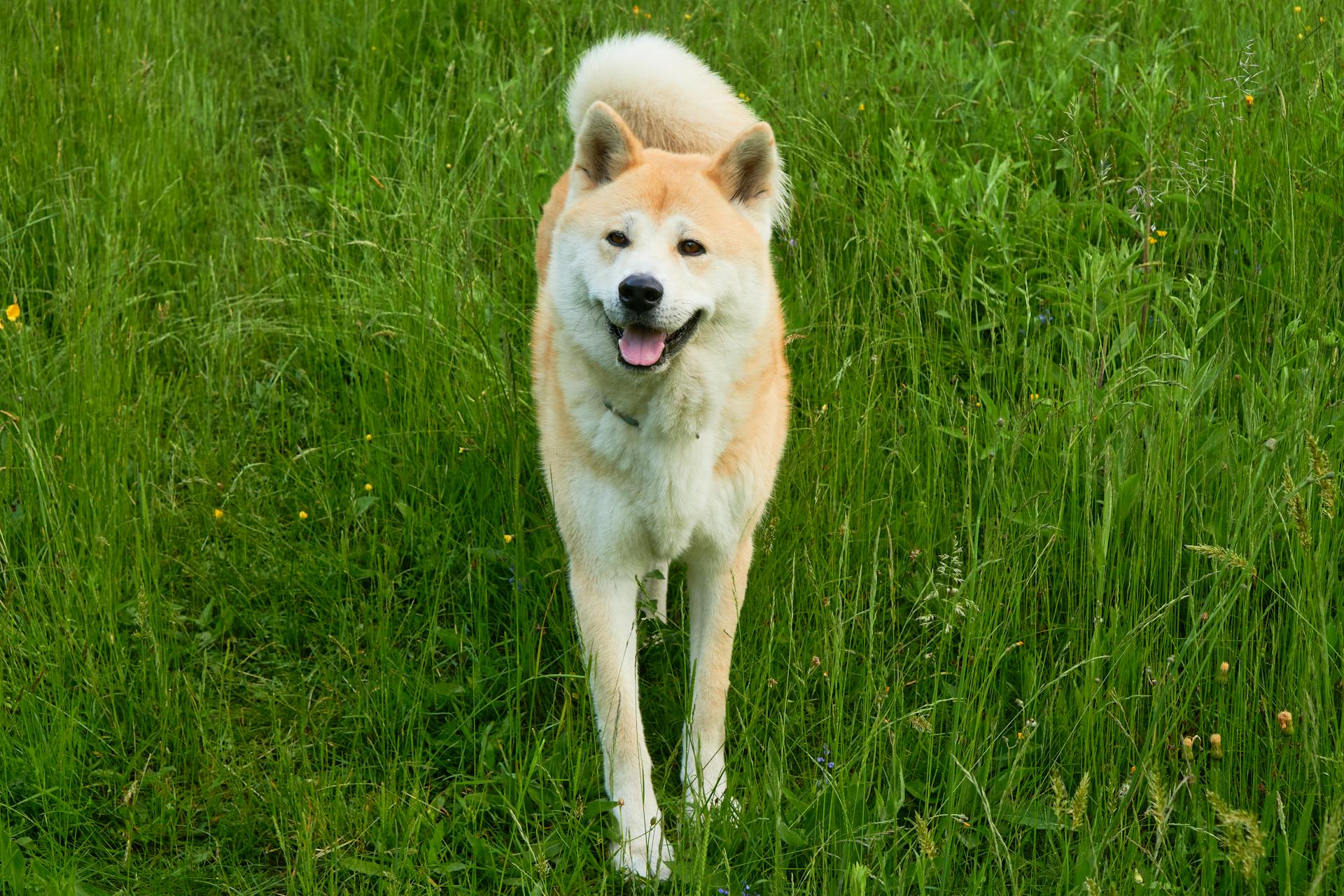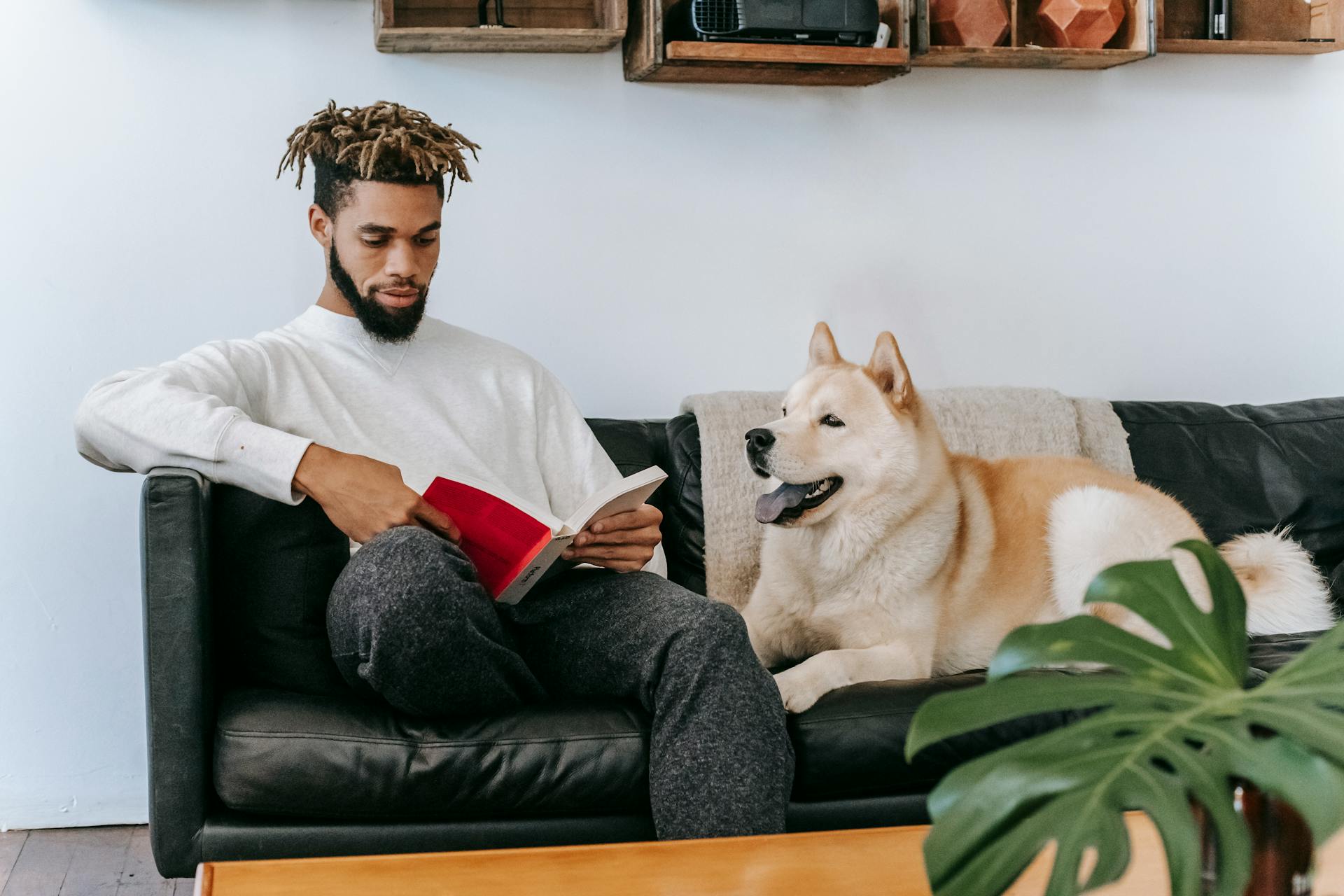
Akitas are a popular breed for many reasons, but they're not for everyone. They can live up to 10-13 years, which is a significant commitment.
Their independent nature means they require early socialization to become well-adjusted pets. This is crucial for their temperament and behavior.
Akitas are known for their loyalty and protective instincts, making them excellent guard dogs. However, this also means they can be wary of strangers.
Their thick coats require regular grooming, especially during shedding season.
Care and Maintenance
Akitas need at least an hour of daily exercise, which can include activities like jogging, playtime, and mental challenges like agility or scent work.
They especially enjoy tugging and running games, and can even excel in dog sports like agility, obedience, nose work, and tracking.
A well-fenced yard is a must at home, as Akitas are capable jumpers.
They love colder weather and snow, but aren't well suited for hot temperatures, as they can easily overheat.
Akitas shed a lot of hair, so be prepared for regular grooming sessions.
Brushing their coat once or twice a week is a good rule of thumb, but be prepared for heavy shedding twice a year, which may require daily brushing.
Regular eye exams are a good idea, as Akitas are prone to eye problems like progressive retinal atrophy.
Akitas can be prone to health issues like GDV, patellar luxation, and hypothyroidism, so it's essential to monitor their health closely.
Feeding them a diet for large-breed puppies that slows their growth rate can help prevent hip dysplasia.
Worth a look: Are Akitas Good with Kids
Health and Nutrition
Akitas need digestible, complete, and balanced food that supplies enough energy for daily activities while helping maintain a healthy weight.
Extra weight puts additional stress on a dog's heart, joints, and metabolism, so it's essential to control their portions and calorie intake while ensuring proper nutrition. Keeping your Akita in an ideal body condition can improve their chances of continued good health.
A fresh diet that provides balanced Omega-3 fatty acids may promote cardiac health and help ward off joint issues. A pre-portioned fresh food plan also makes it easy to feed the right number of calories every day.
Crunchy kibble is often said to clean teeth, but it does no such thing. In fact, kibble is an ultra-processed food and as such can contain substances that actually fuel inflammation in the body, including in the tissues of the mouth.
A diet of fresh, lightly cooked food has been shown to be more digestible than processed kibble, and can promote a healthy gut and good digestion.
Health Risks
The Akita is a large breed that's prone to hip dysplasia, a common condition that affects many dogs.
Bloat is another serious health risk for Akitas, which can be life-threatening if not treated promptly.
Von Willebrand's Disease is a genetic disorder that affects blood clotting, making it a concern for Akita owners.
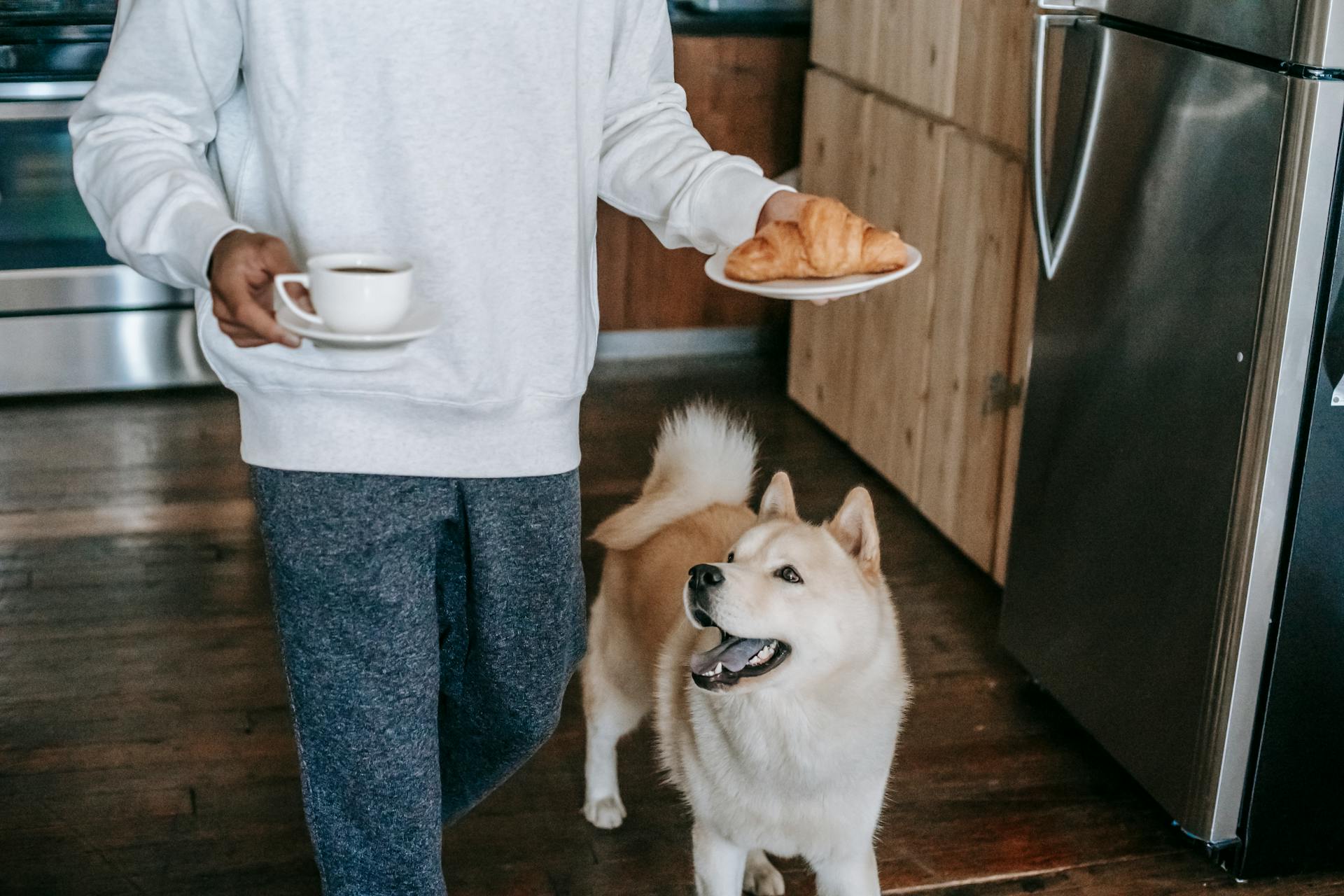
Progressive retinal atrophy is a slow-developing condition that can cause blindness in Akitas, with symptoms including bumping into walls and dilated pupils.
Antioxidants may help slow down the progression of progressive retinal atrophy, but treatment is largely focused on managing the condition rather than curing it.
If your Akita is diagnosed with progressive retinal atrophy, it's essential to make accommodations around the house to ensure their safety and comfort.
Here are some common health risks associated with Akitas:
- Bloat
- Von Willebrand’s Disease
- Progressive retinal atrophy
- Hip dysplasia
Best Diet
Akitas need about three cups of food per day, which should be high-quality, nutrient-rich food full of animal proteins.
Their diet should be balanced and complete, supplying enough energy for daily activities while maintaining a healthy weight.
Control their portions and calorie intake to avoid extra weight, which puts additional stress on their heart, joints, and metabolism.
A fresh-food plan makes it easy to feed the right amount of food for their age, size, and activity level.
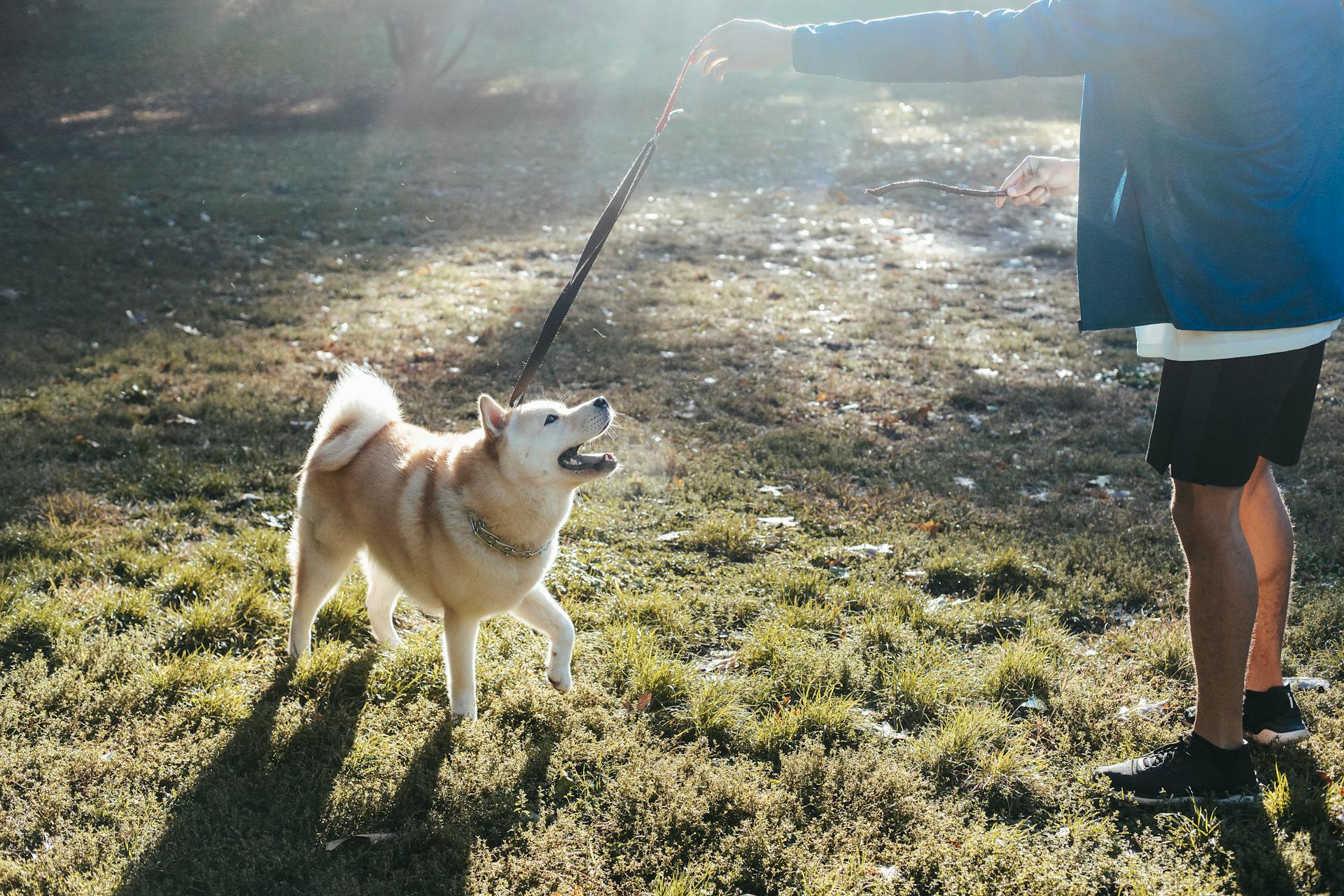
Crunchy kibble does not clean teeth and can actually fuel inflammation in the body.
A diet of fresh, lightly cooked food is more digestible than processed kibble and can promote a healthy gut and good digestion.
Avoid giving your Akita scraps from your plates, as food tailored to dogs is always preferable.
Akitas can be protective of their food, so give them some alone time after you've dished it up.
Personality and Temperament
Akitas are wonderful, friendly dogs, but they can be a bit cold and defensive around other dogs. As with most breeds, socialization is key, especially with an Akita puppy.
Training can be a challenge due to their determined and stubborn nature, which is why experts recommend an experienced owner and handler. They're not the best fit for a first-time pet parent.
Akitas have a high prey drive, perceiving animals like birds and cats as potential prey, so it's essential to keep them safe and secure. They shouldn't be left alone with small children, as their reaction may be unpredictable.
Akitas are alert, courageous, and protective, making them devoted family pets but aloof towards strangers. They're calm dogs, not excessively playful, except when alone with their family.
Their independence and strength can make them challenging to manage, especially for children or the elderly. They may be aggressive towards other dogs, but they're not excessive barkers.
Akitas are not robots, and each has a unique personality, which means even experienced owners may have varied experiences. While training and socialization are crucial, you're battling against thousands of years of evolution and selective breeding.
Their strong-willed nature can make training a bit harder, but it's not impossible. With the right approach, you can bring out the best in your Akita.
Expand your knowledge: Shiba Inu Family
Training and Exercise
Training is mandatory for Akitas, as they're intelligent dogs that respond well to training, but can become unhappy and destructive without it. They're independent thinkers, so patience and consistency are key.
Akitas don't do well with heavy-handed training, but rather brief, fun training sessions that last around 10 minutes a day can achieve great results. You won't spend repetitive hours training with an Akita.
For more insights, see: American Akita Training
Socialization is crucial for Akitas, as they have guarding instincts and can be aggressive towards other dogs. Supervise them around other dogs and children from an early age.
Exercise is a must for Akitas, bred for outdoor activity in frigid Japanese forests. They enjoy and require moderate exercise, such as a brisk walk or two per day, totaling from a half to a whole hour.
Akitas thrive in cool weather, but wilt in high temperatures, so plan to exercise early and late on summer days, and retreat to the AC when necessary. Don't shave their coat, as it helps regulate their temperature and protects them from infections, irritations, and sunburns.
Akitas have a powerful prey drive, so keep them on a leash or in a fenced yard when outside, as they can give chase with little regard for their own safety or the safety of who they're chasing.
Intriguing read: When Do Akitas Stop Growing
Adoption and Preparation
Adoption is a great option for those considering an Akita, and there are many rescues throughout the US that can help you find the perfect companion.
Most of the Akitas at these rescues are adult dogs, so their personalities are already developed, and the rescue staff can give you a good idea of their temperament and needs.
You can find a list of Akita rescues online, and it's worth considering adoption before buying a puppy.
Being prepared is key to owning an Akita, and it's essential to consider the possibility that your dog may not get along with other dogs.
You may need to set up your home and lifestyle in a way that keeps your Akita separate from other dogs, or even accept that you'll only have one dog.
Ultimately, responsible dog owners put their dogs' needs first, so if you can't make it work, don't force it.
Where to Get
If you're looking to adopt a pet, you can start by visiting your local animal shelter. Many shelters have a wide range of animals available for adoption, and the staff can help you find the perfect match for your lifestyle.
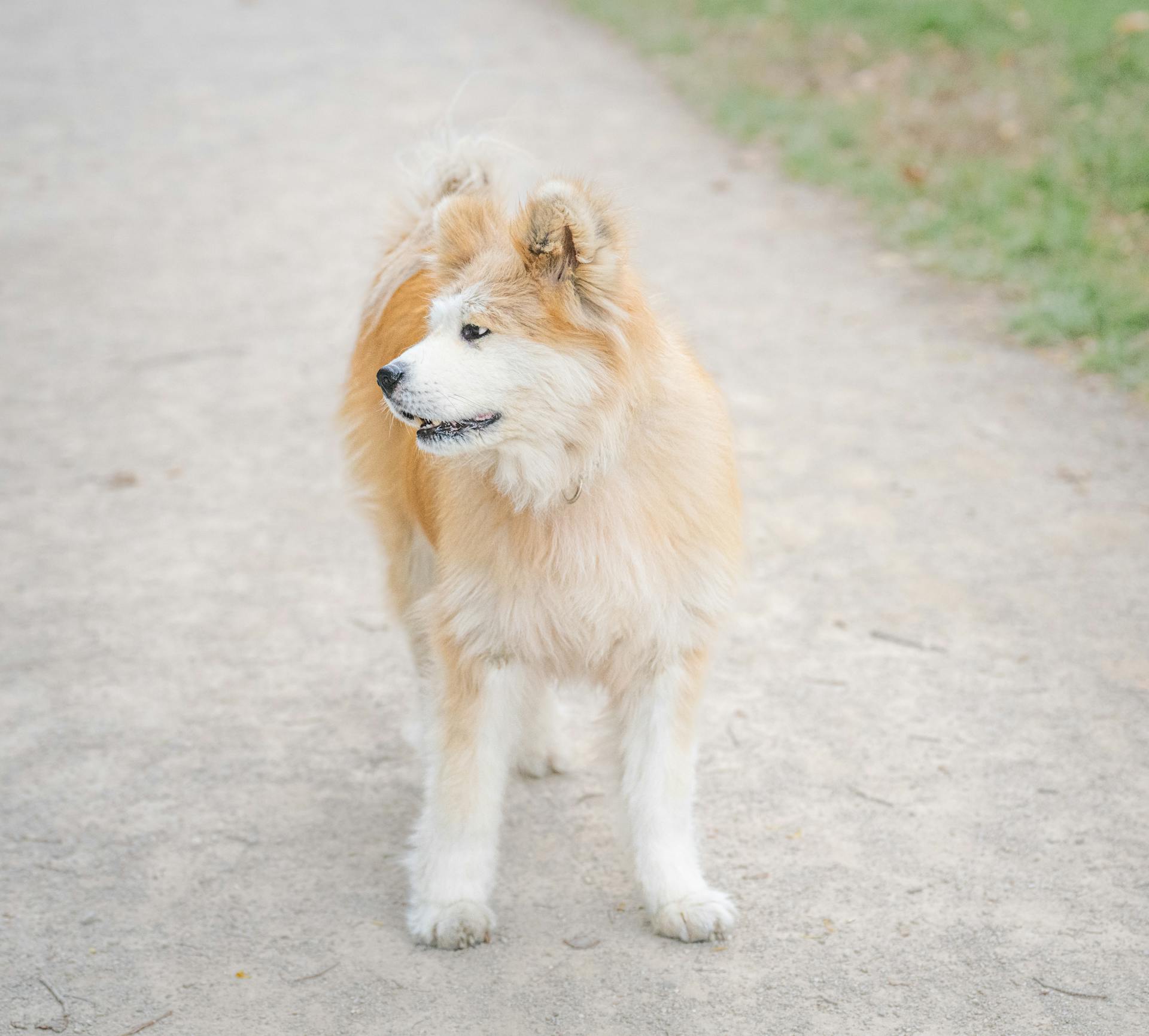
The American Society for the Prevention of Cruelty to Animals (ASPCA) estimates that there are over 7.6 million companion animals entering animal shelters nationwide every year.
You can also consider contacting a reputable rescue organization or a breed-specific rescue group. These organizations often have a network of foster homes and can help you find a pet that fits your family's needs.
Adopting from a rescue organization can be a cost-effective option, with many groups offering low-cost or even free adoption fees.
Check this out: Japanese Chin Dog Cost
Preparing Your Dog for a Halloween Costume
Don't spook your pooch on Halloween! Here’s how to ease them into their costume by introducing it gradually, starting a few days before the big night. This will help your dog get used to the sight and smell of the costume.
Introducing the costume a few days early will also give you a chance to make any necessary adjustments to ensure a comfortable fit. You don't want your dog to feel constricted or uncomfortable in their costume.
Gradual introduction can also help prevent overwhelming your dog, especially if they're already anxious or sensitive. You can start by simply showing them the costume and rewarding them with treats for calm behavior.
As you prepare your dog for their Halloween costume, remember to prioritize their comfort and safety above all else.
Consider Adopting an
Considering adopting an adult dog can be a great option, especially if you're concerned about their temperament. Most adult Akitas at rescues have developed personalities, making it easier to determine their compatibility with other pets.
You can find a list of Akita Rescues throughout the US, and many of them have adult Akitas available for adoption. People surrender their Akitas for various reasons, such as job loss or moving to a new location.
There's often a stigma around Akitas in shelters, but it's not true that only "bad" dogs end up there. Many amazing Akitas at rescues are waiting for a forever home.
Discover more: Shiba Inu Adult
Being Prepared
Being prepared is key when adopting a dog, especially if you're considering an Akita. Some Akitas can be intolerant of other dogs, which means you need to be ready to deal with it.
You might need to set up your home and lifestyle in a way that keeps your Akita separate from other dogs. Many breeders live this way, with multiple Akitas at home.
Don't force your Akita to be around other dogs if they don't want to be. That's not fair to the dogs. Responsible dog owners put their dogs first.
If you can't make it work, it's better to rehome your Akita or other dog rather than putting them through a life of stress and anxiety.
Frequently Asked Questions
Do Akitas like to cuddle?
Akitas are known to be affectionate with close family members, often showing a cuddly and sweet side. However, they can be aloof with strangers, making their loving nature all the more special
What is special about Akita dogs?
Akita dogs are known for their exceptional tracking abilities and loyalty, originally bred to hunt and guard large game in Japan. Their courage and strength have also made them a valuable asset as police dogs.
What are the pros and cons of an Akita dog?
Akitas can make loyal companions for dedicated owners, but they require significant time and effort to train and may not be suitable for families with young children. They're a high-maintenance breed that demands patience and consistency
What are some fun facts about Akitas?
Akitas have a rich history, unique physical features, and spiritual significance, making them a fascinating breed. From their origins as "Snow Country Dogs" to their distinctive webbed toes and iconic tails, there's much to learn about these incredible dogs.
Why is Akita Inu so expensive?
The price of an Akita Inu puppy is influenced by geographical location and market demand, with prices ranging from $1,000 to $3,000 from a reputable breeder. This price range is due to the breed's popularity and the costs associated with breeding high-quality Akitas.
Featured Images: pexels.com
